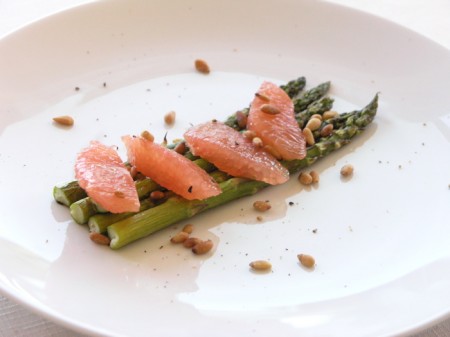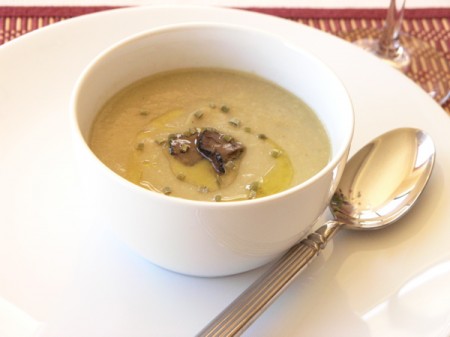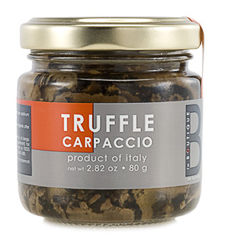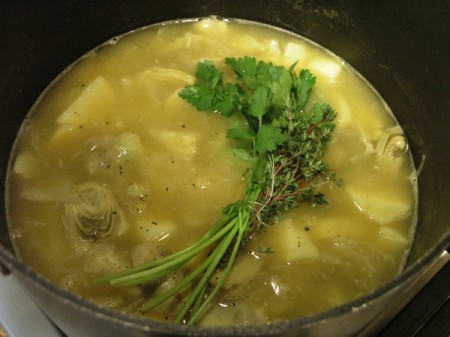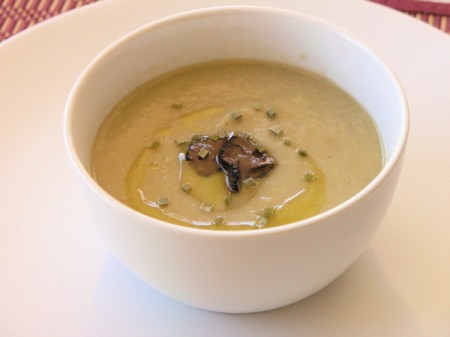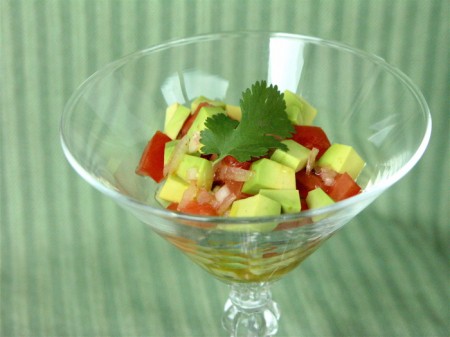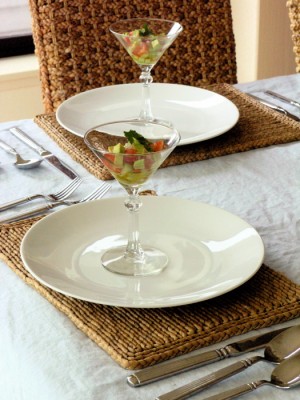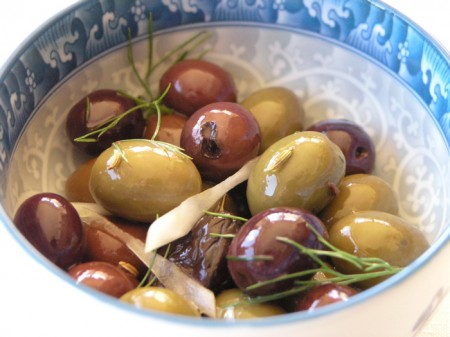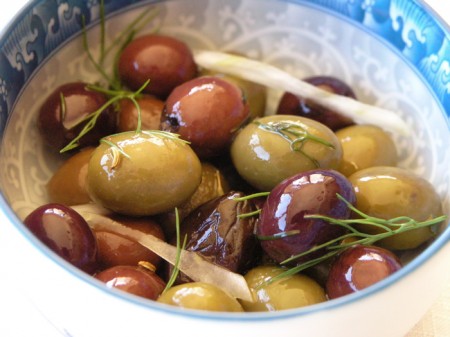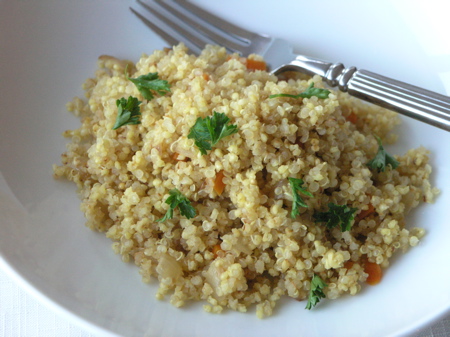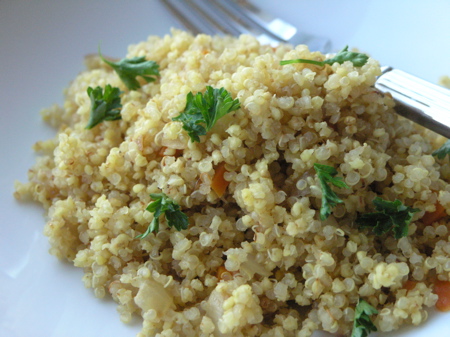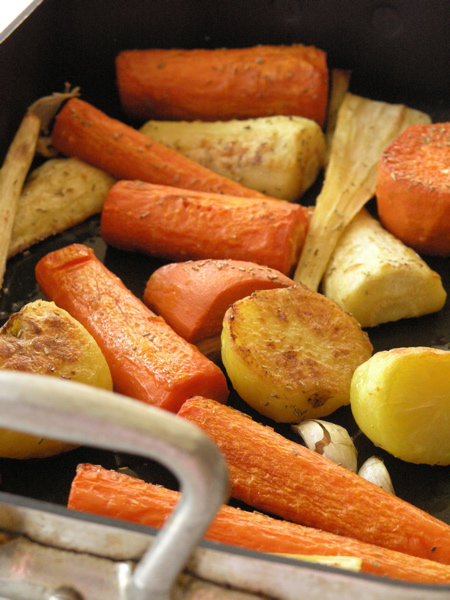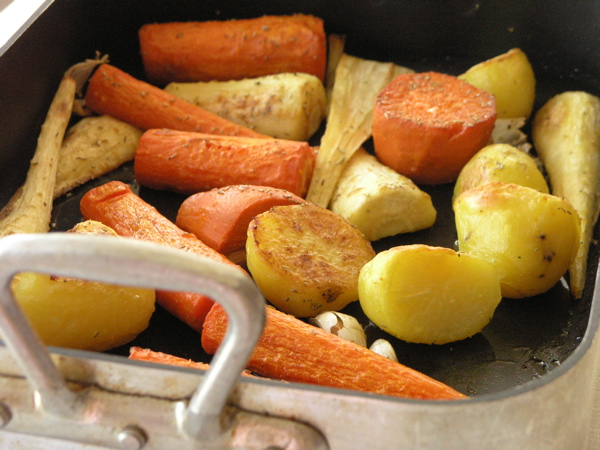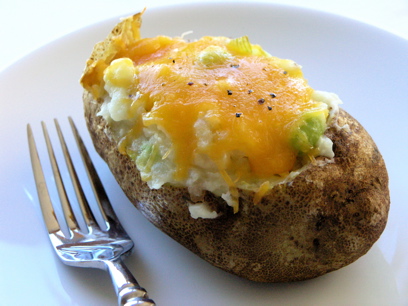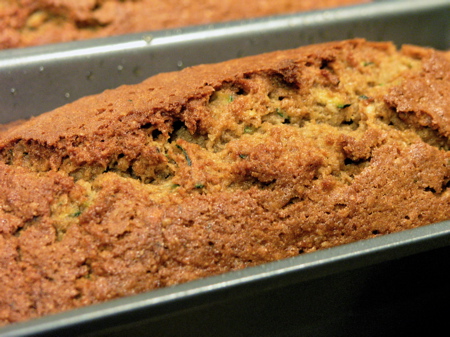
It’s day four of my blogging event: “How to host an elegant, flavorful, vegan, gluten-free dinner party” in which I feature recipes created by the wonderful Viviane Bauquet Farre of food and style. My husband and several of his friends have transitioned to a vegetarian diet and several of them are also avoiding dairy and gluten, so when I decided to celebrate G’s birthday with a dinner party, I knew I needed to turn to my friend Viviane who features such refined recipes which also happen to be meat free. Today’s installment is the third of that five-course meal. For the next course, you’ll just have to check back tomorrow.
So far in this dinner, we’ve enjoyed cucumber and avocado ceviche, and slurped down an artichoke soup with truffles on top. Now we’re ready for a scrumptious early Spring salad, so Viviane’s Roasted Asparagus with Grapefruit is just the thing. Here’s what I learned by making this recipe: It is soooo easy to make and it is easy to prepare ahead of time, when it was time for this course, I could truly relax. All I had to do was plate everything and drizzle it with oil.
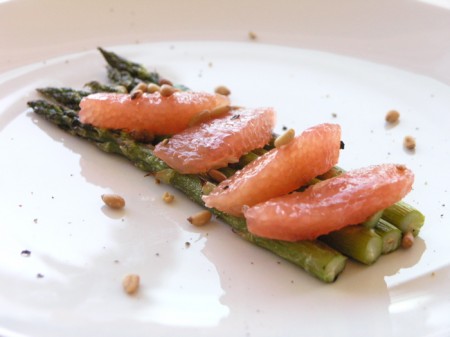
The other revelation I had while making this recipe is just how easy it is to roast asparagus. Brush the spears with a little olive oil, pop them into an oven preheated to 500˚F and 7-10 minutes later you’ve got roasted asparagus. No careful chopping, no peeling, no long wait. It’s like fast food. Well, sort of.
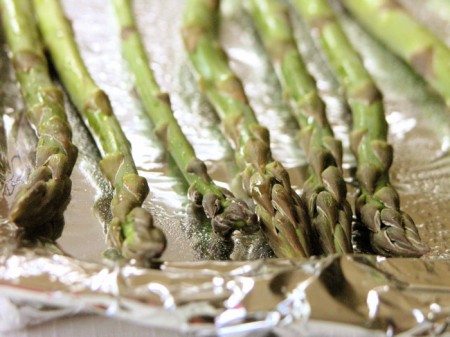
Watch Viviane’s video for more tips on roasting asparagus and to watch her demonstrate how to prepare grapefruit slices with no pith or membrane in sight. Again, now that I’ve done it once, I want to do it this way all the time. My kids love eating citrus in our house now because I prepare for them this way now.
Roasted asparagus with pink grapefruit and lemon oil
Adapted from the recipe by Viviane Bauquet Farre of food and style, with permission.
See her original recipe here.
serves 4
1 large Texas Rio Star grapefruit
1 1/4 lbs asparagus spears – washed and stem snapped
2 tablespoons extra virgin olive oil
1/4 teaspoon sea salt or to taste
2 tablespoons pine nuts
4 teaspoons lemon infused oil as garnish
A bit of lemon zest for garnish
freshly ground black pepper to taste
1 large jellyroll pan
Method
1. Peel the grapefruit down to the flesh, Quarter lengthwise and remove the thin membrane around each slice, being careful not to break them. Transfer to a bowl and set aside.
2. If your pine nuts are raw, preheat the oven to 425˚F. Place the pinenuts on a baking sheet and roast for about 2 minutes, but watch carefully through the window to make sure they don’t burn. Set aside.
3. Increase oven temperature to 500°F. Move rack to the top of the oven. Spread the asparagus on a jellyroll pan. Brush with the olive oil and sprinkle with the salt. Bake for 7 to 10 minutes (depending on their size) until the tips begin to brown. Remove from pan and let cool for 10 minutes.
4. Place a bundle of asparagus in the center of each plate. Top with 3-4 grapefruit slices and sprinkle with the pine nuts. Drizzle with the lemon oil and finish with a bit of fresh lemon zest and freshly ground black pepper to taste. Serve immediately.
